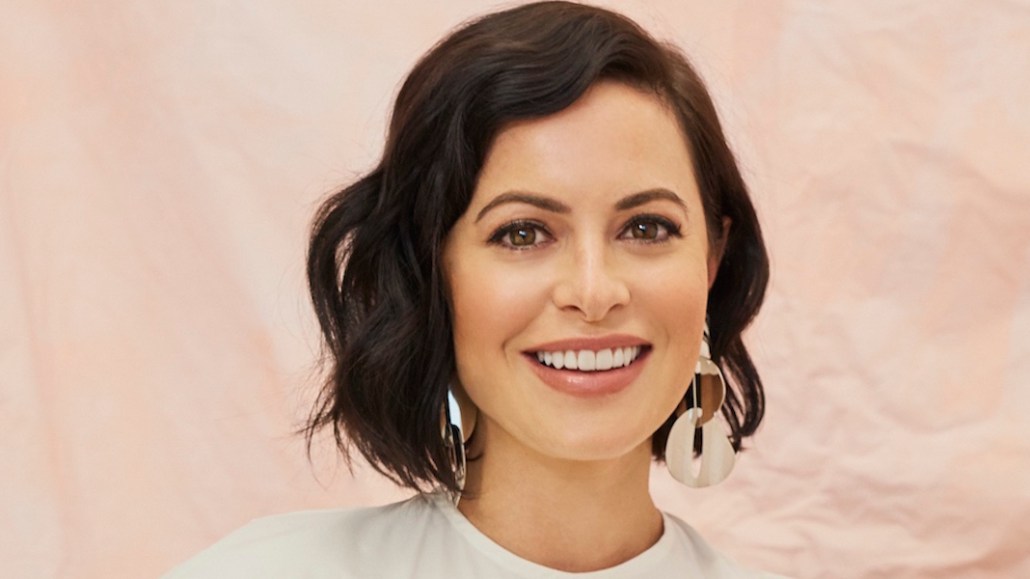Sophia Amoruso on launching Girlboss Media: ‘There’s no physical inventory; it’s wonderful’

Saddled with $1.5 million in venture funding, Sophia Amoruso is back with a new business.
Less than a year after Nasty Gal, the e-commerce fashion company that she started when she was 22, went bankrupt, the now 33-year-old Amoruso has launched a media company, Girlboss Media. The goal is to create a business centered on helping a new generation of women define success, through a company ecosystem that includes a publication, events, a podcast and a foundation that awards financial grants to women in design, fashion, music and the arts.
It’s a bold next step considering Amoruso’s former company went through a very public bankruptcy last November, which she calls “heartbreaking,” before it sold to e-commerce retailer Boohoo for $20 million in February. But this time, she’s armed with an executive team of experienced women from the media and publishing fields, including president and CRO Alison Wyatt, the former CRO at Goop, and COO and editor-in-chief Neha Gandhi, formerly the svp of content strategy at Refinery29. She also has better perspective on how to run a business.
“I learned to stay focused,” Amoruso said when asked how Nasty Gal’s fallout changed her. “It’s easy when you’re a young founder to think all your ideas are great ones, but that can be hard on your team, and distracting, when you’re always changing direction.”
Amoruso believes her trademark persona, which defined the Nasty Gal brand, is better suited at the helm of a digital media company than a fashion one. The transition is telling: The state of online retail is vicious enough that in comparison, online media feels like a friendlier place to play.
Media’s a tough business to make money in. What’s the business model look like?
Experiential — events — will be an important part of what we do. We have yet to build that team in-house for those, but we will soon, as we figure out how often we want to do these events and how big they should be. It’s test-and-error right now. We’re also doing some consulting with brands, which is interesting — we want to help figure out what success means for brands today. Success was built by and for white men, and women have our own constraints and qualities that often haven’t been taken into consideration. When I wrote “Girlboss,” the book, in 2014, I didn’t realize how much one piece of media, one idea, can become. But it went from a book, to a podcast, to a Netflix series. I realized I was building this audience with Girlboss, but it was a side hustle. Now, I’m in position to spend all my time building out my brand and business.

The Girlboss.com homepage
How do you plan to define personal success for your new business?
As far as success is individual, I want to shepherd a conversation to help women find the tools and resources they need to do what they aspire to. But it’s a new business for me, so I looked for people who have worked in organizations like this before, and are great leaders. I’m at an advantage in that I’ve been speaking to young women for my entire career. But it’s definitely different than a retail business. There’s no physical inventory. It’s wonderful. But I needed people with a track record in this industry who are all here for the right reasons and are excited about the mission.
What else did your time working on Nasty Gal teach you?
Nasty Gal was a PhD in what to do and what not to do when running a business. I basically started a business on accident, which is exciting when it grows faster than you could ever hope. But this one is intentional, with so much hindsight, and the ability to create a culture with purpose. When you’re 22 and selling shit on eBay, the way you go about things is very different than when you’re nurturing a team in the early days. The amount of perspective I have now is guiding me.
There are parallels, too. The similarity is that we built an audience at Nasty Gal digitally, even though we had a different goal when speaking to that audience. I will not miss finding new ways to say “check out our new arrivals.” My voice was probably the most important piece of Nasty Gal’s success, so being able to scale that now without thinking about the retail side, while the message behind it is the same, is exciting.
More in Media

What publishers are wishing for this holiday season: End AI scraping and determine AI-powered audience value
Publishers want a fair, structured, regulated AI environment and they also want to define what the next decade of audience metrics looks like.

Media giant Essence launches a marketplace for Black women-led brands
Essence has launched WeLoveUs.shop, a new online marketplace dedicated to Black women-led brands.

In Graphic Detail: The state of AI referral traffic in 2025
The stats reveal a new audience pipeline forming outside of traditional search and social platforms.









